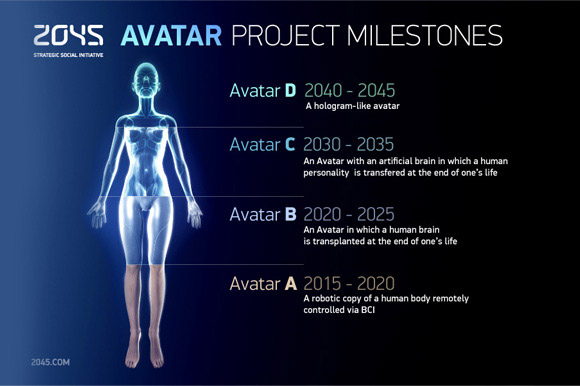Holograms
Holograms are three-dimensional images that appear to float in space. They are created using a process called holography, which uses lasers, mirrors, and special film to record and display an image. Holography has been around for over half a century, but it is only in recent years that it has become more widely known and used for a variety of purposes.
The basic concept of holography is that it records the interference pattern created when two laser beams intersect. One of the beams, called the reference beam, is directed straight onto the film, while the other, called the object beam, passes through the object to be recorded before hitting the film. The interference pattern created by the two beams is recorded on the film, and when it is illuminated with the reference beam, it creates the illusion of a three-dimensional object floating in space.
Holography has a number of unique properties that make it an important tool in various fields. One of these is its ability to store vast amounts of information in a small space. This is due to the fact that a hologram is essentially a 2D image that contains all the information required to recreate a 3D object.
Holographic technology is being used by many industries.
The list of sectors that have already implemented Holograms is as follows:
1. Telecommunications
In 2017, Verizon (USA) and Korea Telecom (South Korea) made the first holographic call using 5G technology.
2. Education
In 2015, the Nobel laureate and professor of physics at Stanford University, Karl Wieman, spoke at Nanyang Technological University (Singapore) without leaving the United States. In 2013, St George’s University of London introduced holograms capable of displaying the working organs of a human body. The presentation showcased three-dimensional images of kidneys four meters in length, a skull, and other parts of the body.
3. Spatial navigation
In 2017, scientists from the Munich University of Technology developed a method for obtaining three-dimensional holograms using a Wi-Fi router. The method described in the study allows for creating copies of premises by displaying objects around them. This technology can be used to find and rescue victims trapped under an avalanche or within collapsed buildings.
4. Marketing and direct sales
Product holograms are a new marketing ploy to grab the attention of customers. With the help of a hologram, you can enlarge a 3D copy of a product and make it viewable from all sides. This is convenient for customers who want to see their desired purchase in full detail. In 2017, Barbie presented a holographic robotic doll that responds to voice commands. The toy was able to respond to questions about the weather and discuss other topics.
5. Music shows
A hologram of Eric Prydz’s face acted as the closing of his EPIC 5.0 show in London, in 2017. The performance of the popular French DJ was accompanied by an impressive laser show. At the end of the evening, over 300 lasers formed a volumetric hologram of the DJ’s head.
6. The return of historical figures
In 2012, Digital Domain studio, specializing in VFX for de-aging Hollywood stars in movies, brought Tupac Shakur back to life as an exceptional 3D hologram. Using an actor and body double, they created animations for a lifelike digital avatar of Tupac. In 2014, Tupac appeared at Coachella in his digital human form.
7. Medicine
Medical holography provides 3D image holograms that can move around and zoom in and out. These holograms enable healthcare professionals to identify problems associated with complex organs such as the brain or heart, where abnormalities might be subtle.
8. Business
Facebook Metaverse is not the only company changing the way of online meetings, Microsoft has created an AR/VR workroom called ‘Mesh’. The ‘platform is a focused event held inside its virtual reality community interface Altspace, Microsoft showcased a new product aiming to provide their AR HoloLens platform and VR Windows Mixed Reality platform with a shared platform for meetings.
The future of holographic technology
The future of holography lies at the intersection of AI, digital human technology, and voice cloning. The consistent increase in worldwide computing power will allow for the creation of digital human models that will render at an ever-accelerating pace that will make them more and more difficult to tell apart from real ones.
In turn, the evolution of holographic technologies will lead to their increasing availability and portability. Imagine if holographic content could one day be as accessible as streaming content: holographic cinema, holographic theater, and music shows.
Augmented reality will no longer require wearing special glasses but will be directly integrated into landscape objects. We already know how holographic pedestrian crossings and holographic advertising work. But we can only imagine how our cities and lives will be changed as the evolutionary pace of technology continues to accelerate.
Another important property of holography is its ability to provide a highly secure method of authentication. This is because it is very difficult to copy a hologram, and any attempt to do so will result in a noticeable difference in the image. This makes holograms a popular choice for use on banknotes, passports, and other secure documents.
Holography is also being used in a number of cutting-edge technological applications. For example, it is being used to create virtual reality experiences, as well as to develop new types of displays for smartphones, televisions, and other devices. Additionally, researchers are exploring the use of holography in medical imaging, where it could potentially provide a more detailed and accurate view of the body.
One of the most exciting possibilities for holography is its potential use in creating truly immersive virtual reality experiences. By using holograms, it may one day be possible to create environments that are completely indistinguishable from reality. This could have major implications for a wide range of fields, including gaming, education, and even military training.
In conclusion, holography is a fascinating and rapidly evolving field that has the potential to revolutionize many aspects of our lives. From its ability to store vast amounts of information in a small space, to its potential use in creating truly immersive virtual reality experiences, holography offers a glimpse into the future of technology.
Further Reading:
Microsoft HoloLens | Mixed Reality Technology for Business
HoloLens 2—Pricing and Options | Microsoft HoloLens
Holograms in Real Life: How the Technology Works and Industry Use Cases (respeecher.com)
Neom: The futuristic city where ‘people, robotic avatars and holograms can co-exist’ | Euronews
Can holograms and avatars replace Zoom video calls? – BBC Worklife
Is Uploading Your Mind To A Computer Possible? These Three Thinkers Expect It Will Be (ibtimes.com)
The immortalist: Uploading the mind to a computer – BBC News
#holograms #spatialtech #hololens #ar #vr #virtualreality #auguementedreality

Zena is currently studying BA Hons Marketing Management at Cardiff Metropolitan University.
In the past, Zena has gained experience with marketing, teamwork skills, communication skills, listening skills, working under pressure, and the ability to maintain speed, accuracy, and efficiency in a fast-paced environment.
Zena is a Marketing Strategist. Being a perfectionist with an eagle eye for errors and attention to detail. Zena's creativity and humourous expertise are valuable assets for witty headlines and making articles stand out.
Typical tasks include: correcting spelling or grammar errors, querying factual inaccuracies, spotting potential legal problems, and writing headlines, abstracts, and captions. Zena is also an advocate for young people with multiple sclerosis.












